You have to convert your image into tf.train.Example in order to write it as tfrecord file.
Here is a simple example of how you can do this.
Taking a look at csv file:

Code:
# The following functions can be used to convert a value to a type compatible
# with tf.train.Example.
def _bytes_feature(value):
"""Returns a bytes_list from a string / byte."""
if isinstance(value, type(tf.constant(0))):
value = value.numpy() # BytesList won't unpack a string from an EagerTensor.
return tf.train.Feature(bytes_list=tf.train.BytesList(value=[value]))
def _float_feature(value):
"""Returns a float_list from a float / double."""
return tf.train.Feature(float_list=tf.train.FloatList(value=[value]))
def _int64_feature(value):
"""Returns an int64_list from a bool / enum / int / uint."""
return tf.train.Feature(int64_list=tf.train.Int64List(value=[value]))
def image_example(image_string, label):
image_shape = tf.image.decode_png(image_string).shape
feature = {
'height': _int64_feature(image_shape[0]),
'width': _int64_feature(image_shape[1]),
'depth': _int64_feature(image_shape[2]),
'label': _int64_feature(label),
'image_raw': _bytes_feature(image_string),
}
return tf.train.Example(features=tf.train.Features(feature=feature))
The image_example functions return a tf.train.Example object of a single image.
You have to iterate over the data frame to create tf.train.Example object of every image and write the object using tf.io.TFRecordWriter.
Code:
record_file = 'images.tfrecords'
image_labels = {
'cat': 0,
'bridge': 1,
}
with tf.io.TFRecordWriter(record_file) as writer:
for row in df.index:
full_path = 'data/img/new/' + df['filename'][row]
label = image_labels[df['label'][row]]
image_string = tf.io.read_file(full_path)
tf_example = image_example(image_string, label)
writer.write(tf_example.SerializeToString())
For a complete tutorial on Reading/Writing TFRecord files see this.
If you have multiple labels you can create multiple features in your feature dictionary inside image_example.
Code:
def image_example(image_string, label_color, label_type):
image_shape = tf.image.decode_png(image_string).shape
feature = {
'height': _int64_feature(image_shape[0]),
'width': _int64_feature(image_shape[1]),
'depth': _int64_feature(image_shape[2]),
'label_color': _int64_feature(label_color),
'label_type': _int64_feature(label_type),
'image_raw': _bytes_feature(image_string),
}
return tf.train.Example(features=tf.train.Features(feature=feature))
